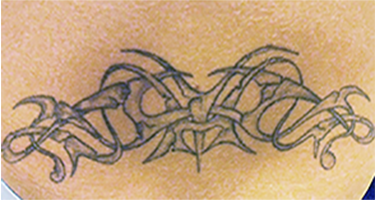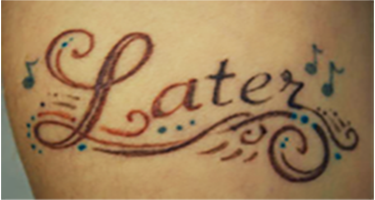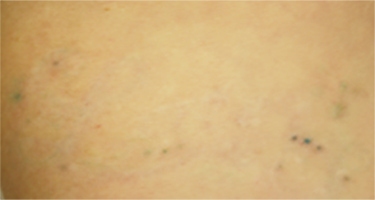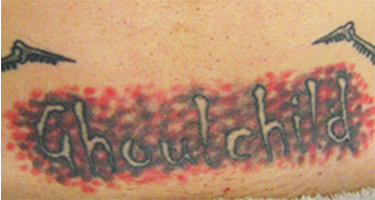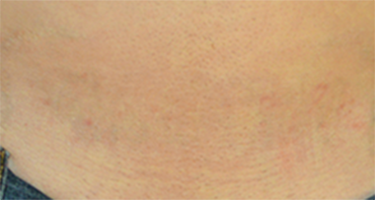Tattoo Removal
Q-switched Laser Tattoo Removal
Rajeunir Medical Spa uses the latest, gold-standard technology for tattoo removal — Q-switched lasers. Our procedure is FDA-approved, noninvasive, and approved for all ink colors. Early procedures for tattoo removal included sanding, cutting and burning the skin. All of these were painful options and left scarring. Later, these removal techniques were replaced by dermabrasions, salabrasions, and C02 lasers, which still left scarring and could not differentiate tattoo colors.
Since the early 90’s, Q-switched lasers have been developed to remove darker tattoo inks with very low risk of scarring. Our laser is the newest of the Q-switched systems capable of removing multiple tattoo inks.
The laser emits an intense beam of light that removes and lightens tattoos without harming the surrounding skin. The light energy may be delivered as a continuous wave of light or in pulses. When the ink particles of the tattoo absorb the light from the laser, they are broken into tiny fragments. These fragments are then absorbed through the body’s natural cleansing mechanism and carried out of the body overthe course of several months.
*Individual results may vary
FAQ's
The laser uses an intense beam of light attracted to the pigment in the ink. The laser then fragments the ink into tiny particles. This allows the body to clear out the ink fragments thus, lightening the tattoo.
The laser emits light in very short flashes called pulses. The impact of the energy from these powerful pulses may be uncomfortable, but the majority of patients do not require anesthesia.
The number of treatments depends on the chemicals in the ink, the depth of the ink in the skin, and individual health considerations. Number of treatments is determined during your free consultation. All treatments are spaced 10 weeks apart.
Pricing starts as low as $100 per treatment, however, pricing is based on the size and intricacy of the tattoo, and will be quoted at your FREE consultation.
No, dark (blue/black) inks and red inks fade the best. Oranges and purples usually respond well. Green, light teal/sky blue and yellow inks are the most difficult to remove, although additional treatments can produce satisfactory results.
Q-Switched
- Shorter bursts causes less pain
- Smaller particles causes less damage to the skin’s surface
- Scarring is almost non-existent
CO2 Laser
- Longer bursts cause more pain
- Larger particles cause more damage to the skin’s surface
- Scarring or a ghost-like appearance
In some cases, yes. However, it is very important to know that over 250 tattoo inks are in use worldwide today, none of which are regulated by the FDA. Not knowing which tattoo ink, how deep, or how much ink was used, makes it difficult to predict the degree of removal for any given tattoo.
A dressing will be applied to the area. The treated area should be kept clean with continued application of Polysporin. A shower can be taken 24 hours later, although the treated area should not be scrubbed. Read more on post-treatment care in the pre-/post-treatment care tab.
- Keep dry and covered for 24 hours.
- Apply antibiotic ointment, Polysporin, 2 times a day until skin has returned to normal.
- Do not use Neosporin.
- If a small amount of bleeding or scabbing occurs, dress treated skin with bandage or gauze dressing.
- Wash treated area gently with soap and water, pat dry and apply the ointment until areas are completely healed. Apply a clean non-stick dressing the area and secure with tape.
- Use ice or cold compress for 24 hours, as needed.
- Do not perform heavy exercise following treatment.
- If the Skin Care Specialist recommends, use of an over-the-counter steroid cream (1-2% Hydrocortisone). Massage daily into treated area beginning 10 days after treatment.
- Avoid swimming, hot tubs and contact sports while crusts are present.
- Use an SPF30 or greater sunscreen on treatment area until next treatment.
Before & After Tattoo Removal Treatments
